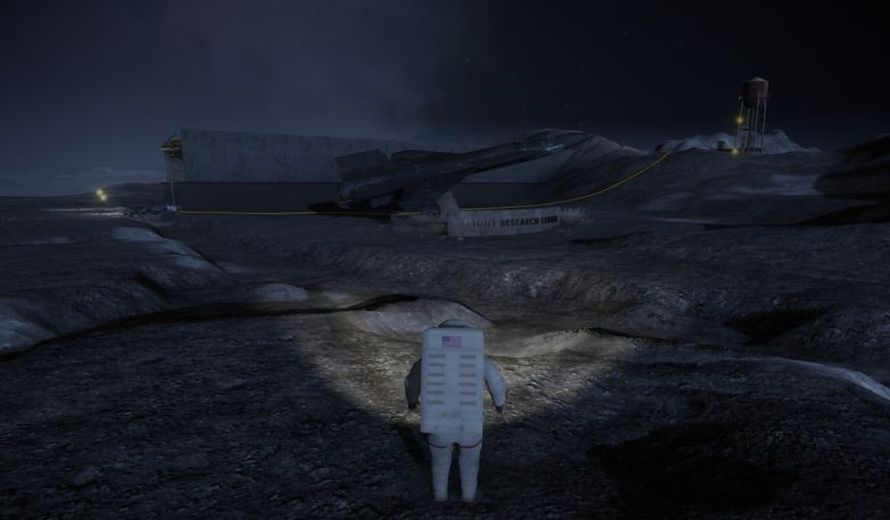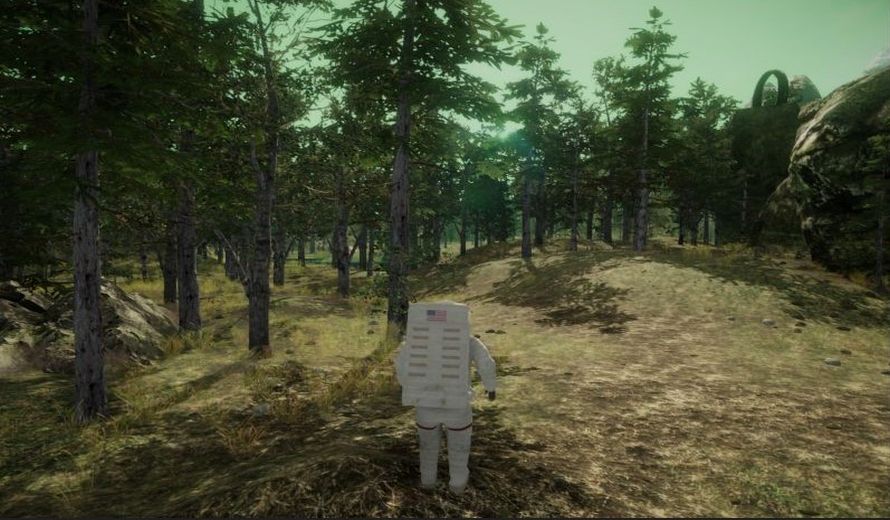Lifeless Moon Review
Lifeless Moon from Stage 2 Studios arrives nine years after the initial games in the series – Lifeless Planet. Stage 2 Studios is a small team that used Kickstarter to fund this game. The game launched on PC, August 10, 2023. Releases for consoles platforms are to follow. This is a passion project that looks poised to not only reward fans of Lifeless Planet, but to entice new gamers to enter this new journey. Stage 2 Studios gave COGConnected a sneak preview of the game that you can reference – here.
The game takes place in the era of Apollo astronauts. You play the game from a third person over the shoulder POV. They set the game opening inside a moon crater where your first mission is to find your fellow astronaut. As noted in the preview, it’s disconcerting to see a figure you’ve seen in film and video slowly bounding across the moon surface, now zip around like a roadrunner.
It’s a wise gameplay concession as it speeds up surface travel. The other gameplay decision, I surmise, to keeping the player space suited, is to limit environment interactivity. For a small indie team, this simplifies game development. However, for the player, this could be construed as a game constraint.
Small Studio, Big Ideas
So the challenge for the developer is to create a story with worlds and puzzles that keep the player engaged. How successful is Stage 2 Studios at accomplishing this? I’m happy to report that, for the most part, they do a good job.
You play from an over the shoulder third person view. The character is playable by either keyboard or controller. Both options work equally well. Your character’s actions are limited, though. You can either jump or interact with objects. Later in the game, you receive a jet pack which allows for traversing larger gaps.

The spacesuit does comes with an inventory system with objects being placed there automatically. Another handy, dandy item the suit has is a head mounted flashlight – useful for dark areas – but it is not a big part of the gameplay mechanics.
To keep track of your progress, there is a notebook. The notebook has several tabs for notes and documents. As you move about the world, you’ll be picking up notes that build up the story. Some notes provide story hints and character back story.
Check Your Notebook
But mostly the notebook prompts you for the next ‘to do’ or quest task. You’ll find this under the EVA tab. It is not only helpful but vital because without you wouldn’t have a clue what to do next. This mechanic is the cliched – Damocles Sword.
While the EVA tab keeps you on the story path. It is the only way to stay on the story path. This removes the incentive for any deep searching. The gameplay cycle is repetitive. The goal of each area is really to find the next portal to get to the next area.

This wouldn’t be so bad if each area wasn’t so small and usually so barren. You buzz around an area looking for notes or pictures that will update your EVA with the next task to complete. Occasionally you’ll discover an unusual object, such as a fossil or a character’s note or letter.
There are puzzle mechanics involved with each portal. First, you’ll have to find an energy source. Then, once the portal has power, you must focus its energy on a specific target to trigger the teleportation spot or a portal. The portals are large ring-shaped structures that sit on the ground. They carry a strong Stargate vibe to them.
Game Strengths
The game limitations are a product of its indie roots. Fortunately, there are also strengths that a game of a small or singular vision can benefit from. I break these down into three areas. These are the graphics, the soundtrack, and, most importantly, the story.
Technically, the game runs with no major issues. There are occasional incidents of clipping. Also, the astronaut can do a funky stutter step moon walk if he gets hung up on an object. Fortunately, neither glitch detracts from the game and the latter is actually kind of funny.

Visually, the game looks gorgeous. While the areas may be small, they are also well realized. As you move from the moon to other worlds, there are highly detailed areas to behold. There is a great sense of scale both inside and outside.
When you are outside, you will see some amazing structures, be they natural or built by sentient life. They integrated the platforming sections with the environments well. On the flip side, when inside a structure, the objects within them are very detailed.
Super Soundtrack
Beyond the graphics, they grace the game with a fantastic soundtrack by Rich Douglas. He has crafted an aural accompaniment to the game that not only provides stingers for gameplay triggering events but also amplifies the game’s goal of inspiring a sense of awe and adventure. It’s a wonderful mix of electronic and orchestral instrumentation.
Finally, there is the story. Without a doubt, this is the game’s strongest suit. It does a good job at the outset of teasing you with the mystery elements. Then, as the game progresses, woven into the main storyline are other, more personal threads.

This latter addition is important because you can only keep a player engaged intellectually for so long. A story needs an emotional through line too. Lifeless Moon does a great job of interleaving the big and small story lines together.
Lifeless Moon also knows to not overstay its welcome. Players can finish the game in two and a half to three hours. It’s the perfect length for this type of game and doesn’t overstay its welcome.
Fans and Newcomers Are Welcome
Fans of Lifeless Planet will be right at home with this game. Players who have not played the first game – understandable give the time gap between the two games – can play this game with no knowledge of the first game. If you’re a fan of big idea stories tied to puzzle solving and platforming type of games, Lifeless Moon is definitely worth a look.
***Lifeless Moon PC code provided by the publisher***
The Good
- Compelling Story
- Super Soundtrack
- Great Graphics
The Bad
- Limited gameplay mechanics
- Constrained areas
- Minor graphical issues
